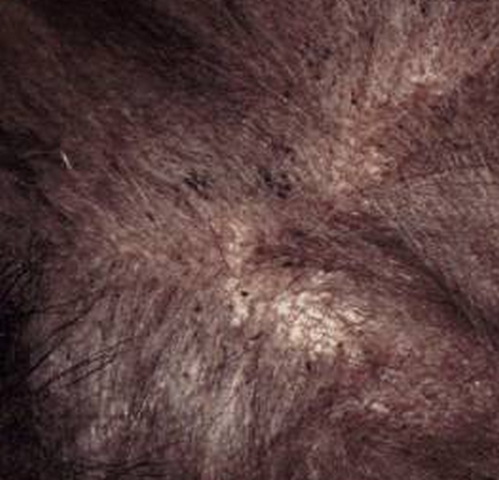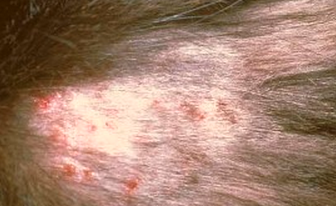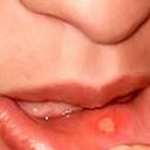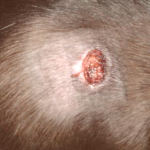Flea bites on dogs are not considered a serious problem in most cases. However, they can definitely be bothersome.
Flea bites on dogs can result in allergic reactions that are characterized by rash formation, severe scratching, and dryness of skin. Overcoming a flea infestation can be very problematic. Pet owners will however be happy to know that many treatments are currently available to get rid of fleas present on your dog and in your home. Flea prevention products can help you avoid the problem altogether.
The life cycle of flea includes the egg, larva, pupa, and the adult flea. Adult fleas bite;however, they need to be attached to a dog’s skin to survive. After the adult flea has laid eggs, it falls off the victim. The eggs mature and go through the remainder of their life cycle. This process carries on in the dog or other hosts till the last of the fleas have been completely eradicated.
Symptoms of flea bites on dogs
The saliva released during flea bites on dogs reacts with the skin of the dog. This causes irritation and allergic reactions that result in the formation of itchy, reddish bumps at the flea bite site.
The bites typically occur on the belly, at lower end of the tail, the groin region, in the rump, or below the legs. When dogs engage in scratching to relieve the itchiness, the symptoms worsen leading to dryness of skin and hair fall. In most cases, the itchiness associated with flea bites is temporary and mild. However, untreated cases of flea bites on dogs tend to get infected, eventually resulting in development of crusty lesions.
Pet owners may identify the presence of fleas on dogs via the below listed symptoms:
- The affected dog may perpetually nib, scratch, lick, and bite the affected areas of the body, particularly the base of the tail.
- Loss of hair in patches
- Formation of tiny reddish bumps or lumps on the dog’s skin
- Severe itchiness which can cause a lot of discomfort and pain
- In most instances, the rear part of the dog’s body is more affected as compared to the head or the front section of the body.
- Excessive scratching and biting of the affected areas can cause tears in the skin, which in turn can develop secondary infections by bacteria or other germs.
- Fleas are also carriers of immature or grown tapeworms. Hence, swallowing of fleas while biting can result in tapeworminfestation. It can be identified during diagnostic tests.
- Elevated levels of flea infestation, especially in sick or younger dogs, can also cause loss of red blood cells or anemia.
Flea bite hypersensitivity: Allergies in dogs typically develop when they are very young. However, flea allergies can commence at any stage of life. Some dogs may become hypersensitive to flea bites or suffer from allergic dermatitis after a flea bite. Medically known as pruritis, these conditions can cause intense itchiness, and often consequently be accompanied by loss of hair and skin damage due to excessive biting and scratching. Even one of two flea bites on dogs per week can cause hypersensitive reactions. Hence, the symptoms tend to persists even after some kind of flea management. The symptoms occur in bouts and tend to deteriorate with age. A few affected dogs may also experience behavioral abnormalities.
Hot spots on dog’s belly:Hot spots are infected skin areas on a dog. They can occur due to varied causes, and flea bites is one of them. When a dog excessively scratches or bites to alleviate the itchiness of a flea bite on its belly, then it causes a wound which can then become infected with pathogens. This results in development of a hot spot on that dog’s belly. Hot spots have a tendency to spread to other parts of the body, and hence have to be immediately treated.
Treatment of flea bites on dogs
Treatment for flea bites on dogs involves the following:
- Bathing with cool tap water can temporarily help alleviate itchiness and skin inflammation.
- Use anti-flea soaps and shampoos during the bath to get rid of the fleas.
- Application of pure Aloe Vera gel on the affected areas can also help ease irritation as well as heal the skin.
- The vet will prescribe flea bite medicines to reduce itchiness and skin inflammation.
- Prescription hydrocortisone creams or steroid ointments may be used to treat lesions. Hypersensitivity to flea bites on dogs can be treated with antihistamines or steroids.
- Secondary bacterial infections of flea bite wounds are treated with antibiotics
- Once inflammation and itchiness have reduced, the vet will prescribe flea collars that are apt for your dog. The vet may also prescribe topical creams or oral medications to aid the elimination of fleas. Flea powders and flea combs can also be used to get rid of the fleas.
- Finally, flea products need to be used around the house and in the yard to get rid of any flea infestation, thereby reducing the risk to recurrence of flea bites on dogs.
Flea Bites on Dogs – Pictures




